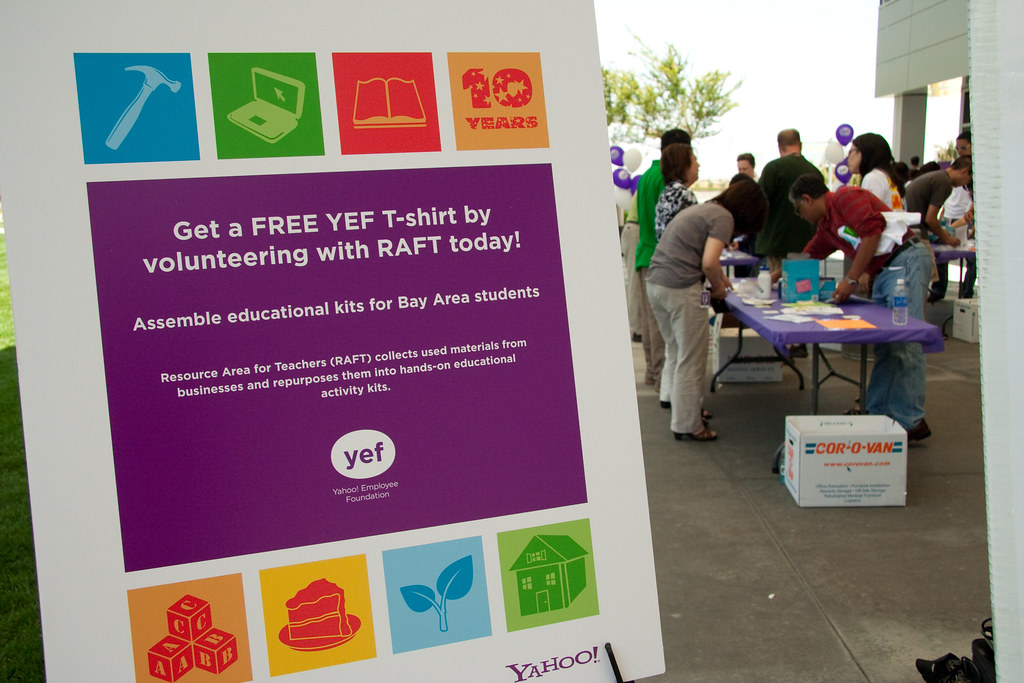
Celebrity philanthropy, once a sporadic gesture, has evolved into a strategic and impactful force in 2025, driven by a confluence of heightened social awareness and pressing global challenges. From funding educational initiatives to providing rapid disaster relief, public figures are leveraging their immense platforms, wealth, and influence to address systemic issues and inspire widespread engagement. This modern approach to giving extends beyond mere donations, encompassing structured initiatives designed for maximum leverage and enduring societal change.
However, for high-net-worth individuals, including many celebrities, the effectiveness and longevity of their philanthropic endeavors are intrinsically linked to astute wealth management and estate planning. Understanding the intricacies of intergenerational wealth transfer, particularly mechanisms like the Generation-Skipping Transfer (GST) and its associated taxation, becomes paramount. These financial instruments are not merely about personal inheritance; they form the bedrock upon which significant, multi-generational philanthropic legacies can be built, ensuring that resources continue to benefit causes and communities far into the future.
This in-depth exploration will delve into the dual facets of contemporary celebrity philanthropy: the immediate, visible impacts of their charitable work and the sophisticated financial strategies that underpin their ability to give on a grand scale. We will analyze the specific drivers behind their charitable decisions, examine their significant contributions in key areas, and introduce the fundamental concepts of wealth transfer that enable such extensive and lasting philanthropic footprints. The goal is to illuminate how strategic financial planning can amplify the reach and sustainability of charitable intent, ultimately shaping a more impactful future.
1. **The Rising Tide of Celebrity Philanthropy in 2025: Drivers and Trends**Celebrity philanthropy in 2025 signifies more than just charitable giving; it represents a powerful trend where public figures actively deploy their wealth, influence, and vast platforms to champion societal causes. This surge is not coincidental, but rather a direct response to increased social awareness and the escalating scale of global challenges, ranging from climate change to persistent inequalities. Celebrities like Beyoncé and Leonardo DiCaprio have notably amplified this movement, establishing foundations that tackle critical issues such as education and environmental sustainability with structured, long-term visions.
The digital age, particularly the pervasive reach of social media platforms like X, has significantly fueled this trend, transforming how philanthropic messages are disseminated and received. A 2024 Pew Research study revealed that a substantial 78% of U.S. adults are more inclined to support causes that receive celebrity endorsement. This statistic underscores the unparalleled visibility and persuasive power that public figures wield, effectively translating their personal advocacy into broader public engagement and tangible support for charitable initiatives.
Beyond mere financial contributions, this trend highlights a strategic shift. Celebrities are not just writing checks; they are becoming architects of change, using their renown to drive donations, inspire fan participation in giving-back initiatives, and mobilize resources on a scale previously unimaginable. This blend of financial commitment, influential advocacy, and strategic outreach defines the dynamic landscape of celebrity philanthropy in the current year, making it an increasingly vital force in addressing global needs.

2. **Making a Lasting Impact: Celebrities Championing Education**Education consistently ranks as a paramount focus for many prominent figures in their philanthropic endeavors, recognizing its fundamental role in societal advancement. Initiatives by stars demonstrate a profound commitment to fostering learning opportunities, particularly in underserved communities. A compelling example is Rihanna’s Clara Lionel Foundation, which has made significant strides in funding schools across Malawi, successfully impacting the lives of over 10,000 children since its inception in 2016. Such direct interventions provide crucial access to quality education, laying the groundwork for future generations.
Similarly, the commitment of celebrities supporting education is powerfully illustrated by LeBron James’ I Promise School. Located in Akron, Ohio, this institution goes beyond traditional schooling by offering comprehensive support, including scholarships and dedicated mentorship programs. Local reports indicate that these concerted efforts have notably reduced dropout rates by 15% within the community, showcasing the tangible and measurable benefits of such celebrity-backed educational models.
These celebrity-led efforts create profound ripple effects that extend far beyond the classroom. By empowering communities with educational resources, they address systemic issues that perpetuate cycles of poverty and disadvantage. The focus on ensuring access to quality learning for underserved populations fosters long-term change, cultivating environments where individuals can thrive and contribute meaningfully to society, thus shaping a brighter, more equitable future.
Read more about: The Philanthropic Elite: Unveiling 12 of the Most Impactful Celebrity Non-Profit Foundations

3. **Rapid Response and Long-Term Recovery: The Role of Celebrity-Funded Disaster Relief**In a world increasingly susceptible to unforeseen crises, celebrity-funded disaster relief has become an absolutely critical component of global humanitarian efforts. While the context highlights “global challenges like climate change” as a driver for celebrity philanthropy, it inherently underscores the growing necessity for swift and substantial aid when natural disasters strike or humanitarian crises unfold. Public figures possess a unique capacity to mobilize resources and attention rapidly, often filling crucial gaps before larger institutional responses can fully materialize.
The urgency of disaster relief demands immediate action, and celebrities are uniquely positioned to leverage their platforms for emergency fundraising and awareness campaigns. Their endorsements can galvanize millions of individuals to contribute, transforming public empathy into actionable financial support for affected regions. This immediate influx of capital can be instrumental in providing essential supplies, medical assistance, and temporary shelter during the critical initial phases of a disaster, directly saving lives and alleviating immediate suffering.
Furthermore, celebrity involvement often extends beyond emergency response to encompass long-term recovery and rebuilding initiatives. Their sustained engagement helps to maintain public interest and funding for protracted periods, which is vital for communities striving to rebuild infrastructure, livelihoods, and social structures. By sustaining focus on areas impacted by disaster, stars who give back ensure that recovery efforts are not forgotten once initial media attention fades, demonstrating a commitment to comprehensive and enduring support.

4. **Inspiring a Legacy of Giving: How Stars Motivate the Next Generation**The visible engagement of prominent individuals in philanthropy plays a pivotal role in cultivating a broader culture of giving, effectively inspiring the next generation to become active participants in social change. When stars leverage their platforms to champion charitable causes, they do more than just solicit donations; they serve as powerful role models, demonstrating the profound impact that wealth, influence, and personal commitment can have on addressing societal needs. This visibility motivates both peers and younger audiences to consider their own contributions.
By transparently sharing their philanthropic journeys and the tangible outcomes of their efforts, celebrities create a compelling narrative that resonates deeply with their fan bases. This inspiration directly drives donations and encourages active participation in giving back through celebrity-initiated programs or independent endeavors. The accessibility of information via social media amplifies this effect, making it easier for individuals to learn about causes, connect with initiatives, and engage in meaningful ways, from volunteering to advocacy.
Ultimately, the enduring legacy of celebrity philanthropy lies in its capacity to foster a sustained commitment to social responsibility across generations. Through their actions, these public figures instill values of empathy, stewardship, and community engagement, inspiring younger individuals to integrate philanthropic considerations into their own life plans and career trajectories. This enduring influence ensures that the spirit of giving continues to thrive, shaping a future where social impact is a recognized and celebrated pursuit.

5. **Generation-Skipping Transfers (GST): A Foundational Concept for Wealthy Donors**For individuals with substantial wealth, a Generation-Skipping Transfer, or GST, represents a crucial estate planning mechanism designed to efficiently transfer assets across generations. This strategy primarily involves grandparents directly leaving money or property to their grandchildren, thereby bypassing the intermediate generation of their own children. The fundamental appeal of a GST lies in its potential to streamline wealth distribution and expedite the transfer process, an attractive prospect for those planning extensive philanthropic legacies alongside family inheritances.
A key advantage of utilizing a GST is the ability to potentially avoid two rounds of estate tax, facilitating a more rapid and less taxed transfer of wealth than if assets were first bequeathed to children and then subsequently to grandchildren. This expedited transfer ensures that more of the intended wealth reaches the ultimate beneficiaries, whether they are family members or philanthropic trusts established for future generations. For high-net-worth individuals, optimizing such transfers is integral to maximizing their estate’s overall impact.
The definition of a “skip person” is central to understanding GST eligibility. A skip person is not exclusively a biological grandchild; the Internal Revenue Service broadly defines them as anyone who is at least 37.5 years younger than the transferor. This inclusive definition allows for flexibility in designating beneficiaries, potentially extending to nieces, great-nephews, or even a child born significantly later in life. This broad scope can be strategically employed to fund long-term charitable trusts or endowments intended to benefit specific younger individuals or causes over extended periods.

6. **Navigating the Generation-Skipping Transfer Tax (GSTT) for Strategic Giving**While Generation-Skipping Transfers offer significant advantages in wealth transfer, Congress enacted the Generation-Skipping Transfer Tax, or GSTT, to prevent the complete avoidance of estate taxes over multiple generations. This crucial federal tax applies to any transfer of property, whether by inheritance or gift, made from one individual to a person at least 37.5 years younger than them. Understanding the nuances of the GSTT is therefore essential for any wealthy donor considering intergenerational giving strategies, including those with philanthropic intent.
The GSTT is levied at a flat rate of 40% in 2025, a rate consistent with the highest federal gift and estate tax rates. However, it is imperative to note that this tax is not applied indiscriminately to all transfers. Instead, it specifically targets amounts that exceed an annually adjusted threshold. For instance, in 2020, this threshold was $11.58 million, increasing to $11.7 million, then $12.92 million in 2023, $13.61 million in 2024, and reaching $13.99 million per individual for 2025. This threshold applies to the entire estate rather than individual inheritances, a critical detail for comprehensive planning.
It is also important to recognize that the GSTT operates as an additional layer of taxation. It is applied *in addition* to any other federal gift or estate tax that may be owed on the transfer. This dual taxation mechanism underscores the importance of meticulous estate planning for high-net-worth individuals. Without careful consideration, what appears to be a straightforward wealth transfer can incur substantial tax liabilities, potentially diminishing the intended philanthropic or familial legacy. Professional guidance becomes indispensable in navigating these complexities to maximize the ultimate benefit.

7. **Understanding “Skip Persons” and Intergenerational Wealth Transfer**The concept of a “skip person” is foundational to the application of the Generation-Skipping Transfer Tax (GSTT) and forms a critical parameter in sophisticated wealth transfer strategies. Fundamentally, a skip person is defined as an individual who is at least two generations younger than the transferor. This typically includes direct descendants such as grandchildren, great-grandchildren, or even more distant relatives, establishing a clear lineal distinction for tax purposes.
However, the definition of a skip person extends beyond immediate family lineage, providing flexibility for specific philanthropic and estate planning objectives. An individual who is not biologically related to the transferor can also be classified as a skip person if they are at least 37.5 years younger than the transferor. This broad criteria allows wealthy individuals, including celebrities, to direct significant assets to younger non-relatives or to trusts established for their benefit, aligning with diverse charitable or personal legacy goals without being confined solely to familial beneficiaries.
Understanding precisely who qualifies as a skip person is paramount because it directly determines whether a transfer is subject to the GSTT. This distinction enables grantors to structure their intergenerational wealth transfers—whether for family or through philanthropic foundations—in a manner that anticipates and strategically manages potential tax implications. By clearly identifying skip persons, donors can proactively allocate exemptions and design trusts that maximize the impact of their wealth, ensuring more resources reach the intended recipients and causes over successive generations.

8. **The Perils of Unplanned Intergenerational Giving: A Case Study in Taxation**While the concept of intergenerational wealth transfer offers powerful avenues for philanthropic legacies, its execution without meticulous planning can lead to severely diminished returns. A stark illustration of this complexity arises when estates are disbursed without fully accounting for the intricate layers of federal taxation, including both estate and generation-skipping transfer taxes. The assumption that a simple will suffices for substantial wealth distribution is a common, and often costly, misconception.
Consider the hypothetical scenario of a deceased person (DP) with a $48 million estate, whose simple will outlined equal $12 million disbursements to a daughter, a grandson, a son, and a granddaughter. The intention for equitable distribution quickly unravels under the weight of the tax code. The daughter’s $12 million, after using up the entire estate tax exemption, means she pays a 40 percent estate tax on the $420,000 exceeding the cap, inheriting $11,832,000. This single distribution, however, depletes the critical estate tax exemption for the entire estate.
The subsequent inheritances suffer dramatically. The grandson, two generations removed, faces a 40 percent estate tax on his entire $12 million, plus an additional 40 percent GSTT on the $420,000 exceeding the GSTT exemption (as the estate exemption was already used). His total inheritance dwindles to $7,032,000. The son, only one generation removed, avoids the GSTT but still incurs a 40 percent estate tax on his full $12 million due to the exhausted exemption, receiving $7,200,000.
The most severe impact falls on the granddaughter. She confronts both the full 40 percent estate tax and the full 40 percent GSTT, leading to an astonishing 80 percent tax rate. Her $12 million inheritance plummets to just $2,400,000. This example underscores how what initially appeared as a fair division of assets became profoundly inequitable, purely due to the lack of strategic estate planning and understanding of the sequential application of tax exemptions and liabilities.

9. **Direct vs. Indirect Skips: Nuances in Wealth Transfer Mechanisms**Understanding the precise nature of a generation-skipping transfer is crucial, as the Internal Revenue Service categorizes these transfers into distinct types, each with specific tax implications. These distinctions, particularly between direct and indirect skips, inform how the Generation-Skipping Transfer Tax (GSTT) is levied and who bears the responsibility for its payment. For high-net-worth individuals and celebrities crafting their philanthropic legacies, discerning these nuances is paramount for effective financial stewardship.
A “direct skip” is the most straightforward form of intergenerational transfer. This occurs when a grantor directly gifts property to a skip person—an individual at least two generations younger than the transferor, such as a grandchild—either outright or into a trust for their benefit. In such cases, the transferor or their estate is explicitly responsible for paying the applicable GST tax at the time the transfer occurs, based on the assets’ value received by the transferee.
Conversely, an “indirect skip” involves an additional step between the original donor and the ultimate skip person beneficiary. There are two primary forms of indirect skips. The first is a “taxable termination,” where an interest in property held in trust terminates—often upon the death of a non-skip beneficiary, such as the grantor’s child—and the assets then pass to a skip person. In this scenario, only the assets remaining to be passed on to the skip person are subject to the GSTT, and the trustee is typically responsible for paying it.
The second form of indirect skip is a “taxable distribution.” This refers to any income or property distributed from an irrevocable trust to a skip person that is not already subject to either estate or gift tax. For instance, if a trust is established to make regular payments to a grandchild, those specific payments, as they are distributed, become subject to GST taxes. In the case of taxable distributions, the skip person recipient is responsible for paying the GSTT, which is a key difference from direct skips and taxable terminations.

10. **Optimizing the GSTT Exemption: Strategic Allocation for Future Growth**The Generation-Skipping Transfer Tax (GSTT) exemption is a powerful tool designed to mitigate the impact of this additional layer of taxation for wealthy donors. For 2025, the federal lifetime GSTT exemption stands at an impressive $13.99 million per individual, or $27.98 million for a married couple. While this threshold means many beneficiaries may not encounter the GSTT, strategic allocation of this exemption is critical for those with substantial assets to ensure their philanthropic and familial legacies are maximally preserved.
Beyond the lifetime exemption, individuals also benefit from an annual generation-skipping transfer tax exclusion, which aligns with the federal gift tax annual exclusion. In 2025, this amount is $19,000 per recipient. This means a grandparent can make a direct gift of up to $19,000 to a grandchild’s bank account without incurring either gift tax or GSTT, as long as the gift remains within the annual exclusion limit for that year. This provides a straightforward mechanism for consistent, tax-free smaller transfers to skip persons.
The true strategic power of the GSTT exemption comes into play with its allocation, especially to transfers made in trust. An individual must actively use or “allocate” some or all of their GSTT exemption to a transfer to avoid the tax on that initial transfer. This allocation is typically reported on a gift or estate tax return (IRS Form 709 or IRS Form 706), although it’s not strictly required by law for automatic allocations in certain scenarios.
A particularly advantageous aspect of allocating the GSTT exemption to a trust is its ability to shelter future asset growth. Once the GSTT exemption is allocated to assets transferred into a trust, any subsequent appreciation on those assets is also permanently sheltered from GSTT. For example, if Paul establishes an irrevocable trust in 2024 for his grandchildren, funds it with $10 million, and allocates his full GSTT exemption to this transfer, even if the trust assets grow to $20 million, no future distributions from that trust would be subject to additional GSTT. This leverage ensures that the initial exemption allocation can shield a significantly larger ultimate value from taxation.

11. **Leveraging Trusts for Intergenerational Philanthropy: The Power of Dynasty Trusts**For those aiming to preserve significant wealth and channel it toward multi-generational philanthropic impact, the dynasty trust stands out as a preeminent strategic tool. This type of irrevocable trust is specifically designed to transfer assets across several generations, often in perpetuity, while minimizing or even eliminating exposure to estate and generation-skipping transfer taxes. It represents a sophisticated approach to long-term legacy planning, offering both robust asset protection and strategic tax advantages.
A dynasty trust incorporates carefully crafted asset protection provisions alongside its generation-skipping transfer tax strategies. As an irrevocable structure, it cannot be easily modified or revoked once established, ensuring the grantor’s long-term intentions are upheld. This permanence, while requiring careful initial consideration, provides a strong shield for assets against future creditor claims, divorces, or other unforeseen financial challenges that beneficiaries might face, safeguarding the intended philanthropic or familial endowment for decades.
The primary appeal of a dynasty trust lies in its potential to achieve complete exemption from the Generation-Skipping Transfer Tax (GSTT). By meticulously allocating the grantor’s full GSTT exemption to all transfers made into the trust, the trust effectively becomes “wholly exempt” from GSTT. This means that, regardless of how much the trust’s assets grow over time, distributions and terminations to skip persons will not trigger any GSTT liability. This characteristic makes dynasty trusts an incredibly powerful vehicle for preserving wealth across multiple generations without the erosion of successive transfer taxes.
While some states enforce a “rule against perpetuities” that limits how long a trust can exist, many jurisdictions have either abolished or significantly extended these rules, allowing dynasty trusts to potentially last indefinitely. This legal flexibility is critical for grantors who envision a legacy that supports charitable causes or family members for centuries. The ability to structure a trust that grows and distributes assets free of recurring transfer taxes over an extended period offers an unparalleled opportunity for sustained philanthropic impact and wealth preservation.
Moreover, dynasty trusts can be strategically combined with other advanced wealth transfer strategies, providing further leverage to an overall estate plan. This synergistic approach allows grantors to maximize the efficiency and reach of their giving, ensuring that their vision for a lasting philanthropic legacy is realized with the greatest possible financial efficacy. Consulting with a seasoned tax advisor is crucial to tailor such a trust to specific goals and navigate the relevant state laws.

12. **Beyond the Basics: Understanding Non-Exempt Trusts in Philanthropic Planning**While many trusts are designed to qualify for various tax exemptions, it is equally important to understand the role and implications of a “non-exempt trust” within a comprehensive philanthropic and estate plan. A non-exempt trust, by definition, does not meet the criteria for certain tax advantages, primarily those related to the Generation-Skipping Transfer (GST) tax. This status often arises from either a failure to properly allocate the GST exemption or the specific design chosen by the grantor, rendering such trusts fully subject to the GST tax, which can be 40% on transfers to “skip persons.”
The determination of a trust’s non-exempt status is intrinsically linked to the grantor’s retained control over the trust’s assets and income. If a grantor maintains significant beneficial interest or specific powers over the trust, it may not qualify for tax-advantaged treatment, thereby influencing its tax obligations. For instance, if a trust is classified as a “grantor trust” under 26 U.S. Code § 671, the grantor is personally considered the owner of the trust’s assets for income tax purposes, and must report the trust’s income, deductions, and credits on their own tax return.
Taxation of non-exempt trusts extends across several areas, including income, gift, and estate taxes. Distributions from these trusts are taxed differently depending on their source. Income distributions are generally taxable to the beneficiary at their individual income tax rates, often lower than trust rates, with the trust deducting the distributed income. Conversely, distributions of principal are typically not taxable to the beneficiary, as these funds were already taxed before their initial transfer into the trust.
Assets contributed to a non-exempt trust may also trigger gift tax if their value exceeds the annual gift tax exclusion, which is $19,000 per recipient in 2025. Furthermore, if the grantor retains control, the trust’s assets could still be included in the grantor’s taxable estate for estate tax purposes. Given the federal estate tax exemption of $13.99 million per individual for 2025 and a 40% tax rate on excess amounts, these considerations are vital for wealthy individuals seeking to maximize their philanthropic impact.
Despite the specific tax treatments, non-exempt trusts still offer compelling advantages. They are highly effective in avoiding the lengthy, costly, and public probate process, allowing assets to be distributed directly and privately to beneficiaries. They also provide a crucial mechanism for asset management should the grantor become incapacitated, with a designated trustee managing assets without court intervention. These benefits underscore that even with non-exempt status, such trusts remain valuable tools for maintaining control, ensuring privacy, and providing for beneficiaries under various circumstances.

13. **Navigating the Complexities: Benefits and Drawbacks of Generation-Skipping Trusts**A generation-skipping trust (GST trust) is an irrevocable fiduciary arrangement designed to pass assets and property to a later generation, typically grandchildren or individuals at least 37.5 years younger than the grantor. While it serves as a powerful instrument for estate planning, particularly for those with substantial wealth, a thorough understanding of its distinct benefits and potential drawbacks is essential for informed decision-making.
One of the most significant benefits of a GST trust is its capacity to preserve a family’s legacy for at least two generations, making it an excellent planning tool for larger estates. By directing assets to skip persons, grantors can ensure that their wealth supports future generations directly, fulfilling long-term philanthropic or familial objectives. Moreover, this structure allows for skipping a round of estate taxes that would typically be assessed if assets were first passed to children and then subsequently to their own offspring, thereby retaining more wealth within the family unit.
Another key advantage is that assets placed into a generation-skipping trust are generally not included in the child’s estate. This separation protects the intermediate generation’s estate from additional taxation and potential creditor claims, while allowing them to maintain full control over their own financial assets during their lifetime. Children can still benefit from trust earnings, as long as the original assets are designated for distribution only to the skip person, providing flexibility and indirect support.
However, it is crucial to acknowledge the potential drawbacks. The most prominent is the Generation-Skipping Transfer (GST) tax itself, enacted by Congress to close the loophole of complete estate tax avoidance across generations. If an estate surpasses the annually adjusted GSTT exemption (which is $13.99 million per individual for 2025), the amount exceeding this threshold becomes subject to both the 40% GST tax and an additional 40% federal estate tax. This “double-whammy” of taxation can significantly diminish the intended legacy if not meticulously planned for, though many families’ estates will not reach this threshold.
Beyond taxation, GST trusts involve an administrative burden. As legally binding fiduciary agreements, they require considerable thought, energy, and resources to set up and manage effectively. While this effort is often justified by the long-term benefits of maximizing and prolonging a family’s legacy, it necessitates professional assistance to navigate the complexities. Additionally, the trust may not be ideal for the children being skipped if the income produced by the trust’s assets is not substantial enough to provide the desired financial support, requiring careful evaluation of the trust’s overall financial design and distribution strategy.

14. **The Indispensable Role of Expert Advisory in Crafting Philanthropic Legacies**The intricate landscape of federal transfer taxes, particularly when it encompasses the Generation-Skipping Transfer Tax (GSTT) and the myriad options for trusts, can be profoundly complex and confusing for even the most financially savvy individuals. Attempting to navigate these waters without expert guidance is akin to sailing uncharted seas; the risk of substantial tax liabilities and unintended consequences is exceptionally high, potentially derailing meticulously planned philanthropic and familial legacies.
This is precisely where the role of a seasoned financial advisor, tax advisor, or estate planning professional becomes not just beneficial, but absolutely indispensable. These experts possess the deep knowledge and experience required to dissect an individual’s unique financial situation, understand their philanthropic aspirations, and craft a bespoke estate plan that aligns precisely with their goals and priorities. They can translate complex legal and tax jargon into understandable strategies, ensuring clarity and confidence for the grantor.
Effective advisory services go far beyond merely minimizing tax exposure; they are about holistic wealth management. Professionals can help wealthy donors, including celebrities, strategically allocate their GSTT exemption, optimize various trust structures like dynasty trusts or non-exempt trusts, and plan for annual gift tax exclusions to maximize the amount transferred to skip persons and charitable causes. They ensure that every dollar works harder, reaching its intended destination with maximum impact and minimal erosion.
Ultimately, the value of expert advisory extends to protecting not just the bottom line on a balance sheet, but also the broader dimensions of a grantor’s legacy—their business, their family’s financial security, their desired lifestyle, and their profound desire to make a lasting philanthropic difference. By partnering with knowledgeable professionals, individuals can proactively manage risks, leverage opportunities, and construct a robust estate plan that transforms their charitable intent into a powerful, enduring force for good, shaping a future where their vision continues to thrive for generations to come.
The evolution of celebrity philanthropy in 2025 is a testament to the powerful synergy between passionate giving and sophisticated financial strategy. From the immediate impact of educational funding and disaster relief to the far-reaching influence of inspiring future generations, public figures are setting new standards for social engagement. Yet, the bedrock of truly enduring philanthropic legacies lies in the astute understanding and meticulous execution of wealth transfer mechanisms. By leveraging tools like Generation-Skipping Trusts, optimizing exemptions, and embracing expert advisory, celebrities and high-net-worth individuals can transcend mere donations, crafting legacies that not only address today’s challenges but also empower generations to come. The future of philanthropy is undoubtedly strategic, impactful, and deeply rooted in thoughtful planning.




